#Lower Nubia
Explore tagged Tumblr posts
Text
Karanog: The Governor's Palace in Lower Nubia, Egypt: A Glimpse into Meroitic Culture
Karanog, the provincial capital of the Meroitic kingdom during the 2nd century A.D., offers us a window into a culture that thrived in Lower Nubia. At the heart of this ancient settlement stood the impressive Governor’s Palace – an architectural marvel that reflected the power and sophistication of the peshtos, or governors, of Meroitic Lower Nubia. The grandeur of the Governor’s Palace is truly…

View On WordPress
#African architecture#African History#ancient egyptian architecture#Karanog#Lower Nubia#Meroitic Culture#Meroitic kingdom#Nubian Architecture#The Governor&039;s Palace
0 notes
Text
Is anyone still around this space? been a minute... too many changes, but maybe a taste of the old can usher in the new? wtf not... let's go!
#sudan #backfromthedead #tumblr #letsdoit
ohhh yeahhh so of course I had to give a shout out to my #Kandaka Nubian Queen with a little help from akhouna AI

#sudan#nubia#ai art#ai image#back from the dead#tumblr you good?#Kandaka#Upper Egypt kicks lower Egypt Ass#Sudan will make a comeback
1 note
·
View note
Text



Jar with snakes and giraffes
Egypt, Lower Nubia, Karanog Cemetery
Meroitic Period, 100 BCE - 300 CE
Ceramic, paint; H. 34 cm, Dia. 29.4
Penn Museum E8183
“Undulating snakes curve around the top of this jar. On the frieze below, giraffes - which were native to Upper Nubia - eat from tall trees.”
#animals in art#museum visit#ceramics#jar#pottery#ancient art#ancient Egypt#Meroitic art#polychrome#snake#snakes#giraffe#giraffes#African art#African animals#Penn Museum
71 notes
·
View notes
Text

Reliefs of Senusret II and Neferhotep I making offerings to Anuket on Sheila. Anuket is the goddess of the cataracts of the Nile and lower Nubia in general, typically worshipped especially at Elephantine near the first cataract.
97 notes
·
View notes
Photo

Dodekaschoinos
The Dodekaschoinos (literally "Twelve Cities" in Greek) was the name of a region in Lower Nubia that became an important province of the Ptolemaic Kingdom after it was annexed from Meroitic Nubia by the Egyptian kingdom. The area fell under Roman influence in the 1st century BCE following Egypt's conquest in 30 BCE. Its area extended between the 1st and 2nd Cataracts of the Nile in ancient Kush although parts are within modern-day Egypt.
History of the Region Under the Ptolemaic Kingdom
The beginning of Ptolemaic influence in Nubia began when Ptolemy II (283-246 BCE) led a campaign against the kingdom of Meroe c. 275 BCE and successfully conquered the province which was afterwards referred to as "the Twelve Cities". It then fell under the administration of the Egyptian nomes (a term for the provinces Egypt was divided into). It was at first technically a part of the Thebaid nome, but in reality, it was governed by the commander in charge of the soldiers garrisoned in the region. This situation remained unchanged until sometime in the 2nd century BCE when the region was reintegrated into the Elephantine nome with its civilian governor instead of being a part of the Thebaid nome.
The Dodekaschoinos retained much of its native administration, and a Nubian governor appears to have been appointed and had authority over the Nubian inhabitants of the province. Many Nubian inhabitants of the region integrated into Ptolemaic and later Roman society like their Egyptian counterparts, acquiring Greek language and education, citizenship rights and Greek or Roman names. Kushite or "Aethiopian" slaves are also known from throughout the Ptolemaic and Roman world, but particularly in Upper Egypt which was nearest to Nubia.
The Dodekaschoinos was part of the secession of Upper Egypt (205-185 BCE) that was supported by the Meroitic kingdom which sought to regain formerly Nubian territory through an alliance with the rebellious Egyptian factions. When Ptolemy V retook the province (c. 185-184 BCE), he dedicated the Dodekaschoinos and Philae to Isis as an attempt to legitimise the Ptolemaic rule of the region and ingratiate the Temple of Isis in Philae.
Continue reading...
48 notes
·
View notes
Text
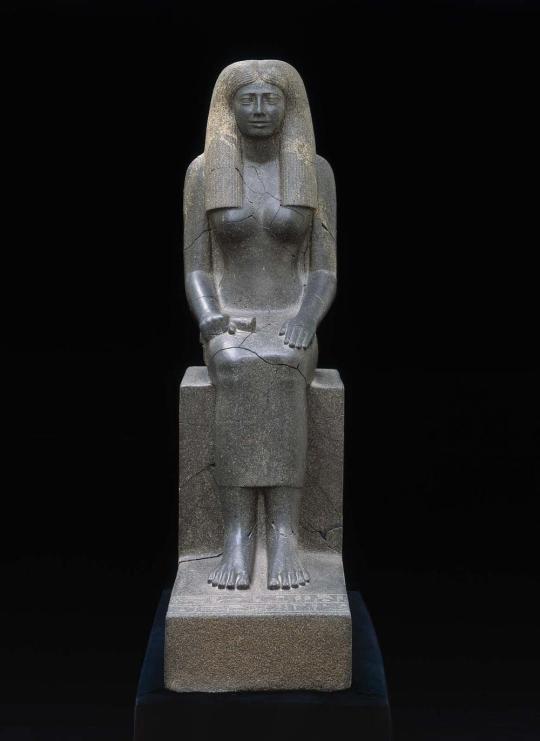

~ Statue of Lady Sennuwy.
Period: Middle Kingdom, 12th Dynasty, reign of Senusret I
Date: ca. 1971-1926 B.C.
Place of origin: Lower Nubia (Sudan), Kerma, Tumulus K III.
Medium: Granodiorite
#ancient#ancient art#history#museum#archeology#ancient egypt#ancient sculpture#archaeology#ancient history#egyptian#egyptology#egypt#statue of lady sennuwy#middle kingdom#12th Dynasty#senusret i#nubia#sudan#kerma#granodiorite#ca. 1971 b.c.#ca. 1926 b.c.
531 notes
·
View notes
Text

Hathor | Goddess of Love and Motherhood Talon Abraxas
Hathor is one of the most famous goddesses of Ancient Egypt. She was known as “the Great One of Many Names” and her titles and attributes are so numerous that she was important in every area of the life and death of the ancient Egyptians. It is thought that her worship was widespread even in the Predynastic period because she appears on the Narmer palette. However, some scholars suggest that the cow-headed goddess depicted on the palette is in fact Bat (an ancient cow goddess who was largely absorbed by Hathor) or even Narmer himself.
There is no doubt that her worship was well established by the Old Kingdom as she appears with Bast in the valley temple of Khafre at Giza. Hathor represents Upper Egypt and Bast represents Lower Egypt.
She was originally a personification of the Milky Way, which was considered to be the milk that flowed from the udders of a heavenly cow (linking her with Nut, Bat and Mehet-Weret). As time passed Hathor absorbed the attributes of many other goddesses but also became more closely associated with Isis, who to some degree usurped her position as the most popular and powerful goddess. Yet, Hathor remained popular throughout Egyptian history.
More festivals were dedicated to her and more children were named after her than any other god or goddess of Ancient Egypt. Her worship was not confined to Egypt and Nubia. She was worshipped throughout Semitic West Asia, Ethiopian, Somalia, and Libya, but was particularly venerated in the city of Byblos.
Hathor was a sky goddess, known as “Lady of Stars” and “Sovereign of Stars” and linked to Sirius (and so the goddesses Sopdet and Isis). Her birthday was celebrated on the day that Sirius first rose in the sky (heralding the coming inundation). By the Ptolemaic period, she was known as the goddess of Hethara, the third month of the Egyptian calendar.
As “the Mistress of Heaven” Hathor was associated with Nut, Mut and the Queen. While as “the Celestial Nurse” she nursed the Pharaoh in the guise of a cow or as a sycamore fig (because it exudes a white milky substance).
As “the Mother of Mothers” she was the goddess of women, fertility, children and childbirth. She had power over anything having to do with women from problems with conception or childbirth, to health and beauty, to matters of the heart. Yet, she was not exclusively worshipped by women and, unlike the other gods and goddesses, she had both male and female priests.
20 notes
·
View notes
Text

معبد الدكة النوبة السفلى 1877
Temple of Dakkeh Lower Nubia 1877
17 notes
·
View notes
Text

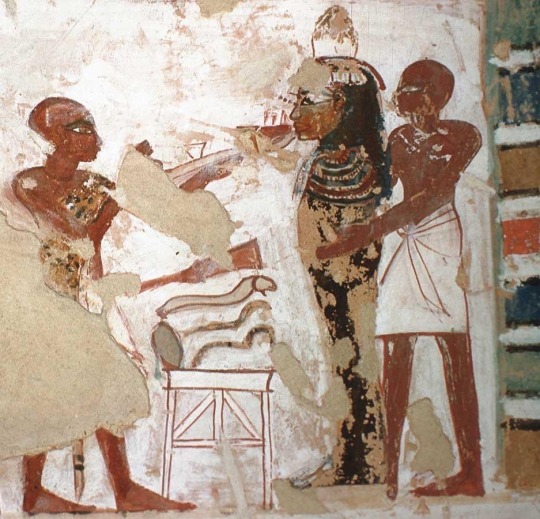
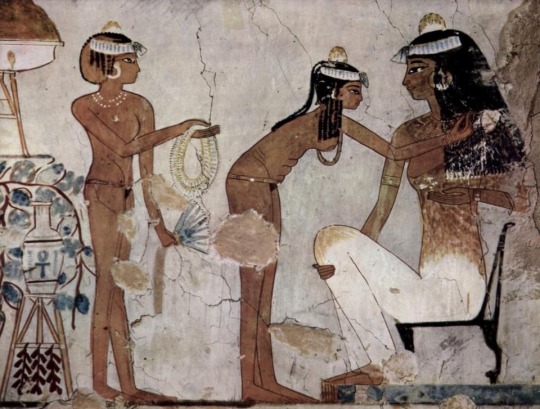
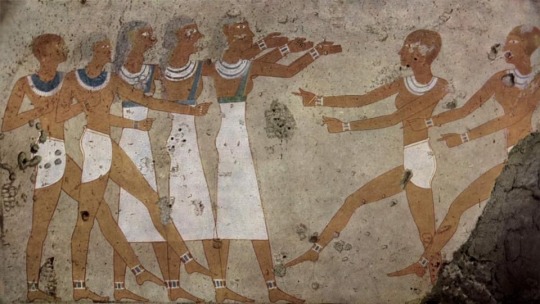

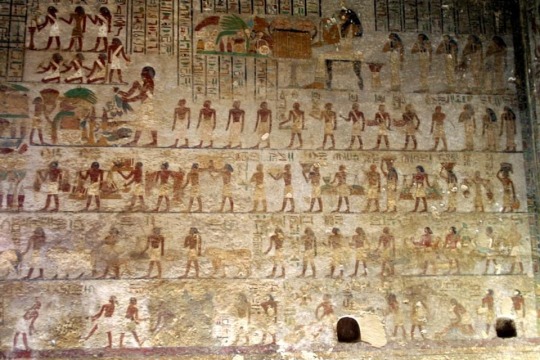
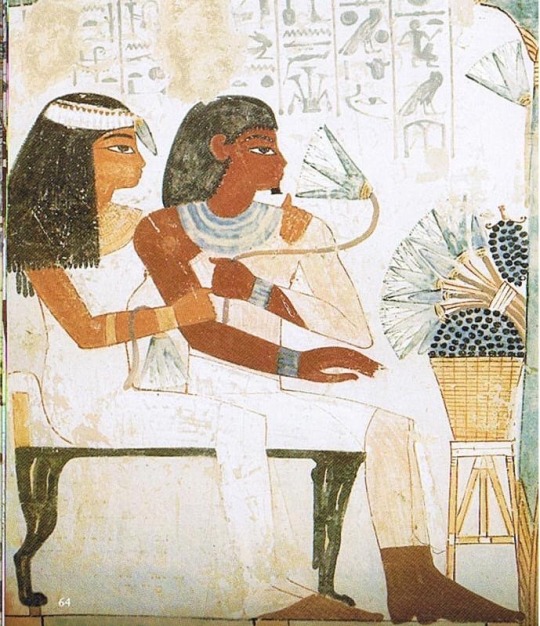

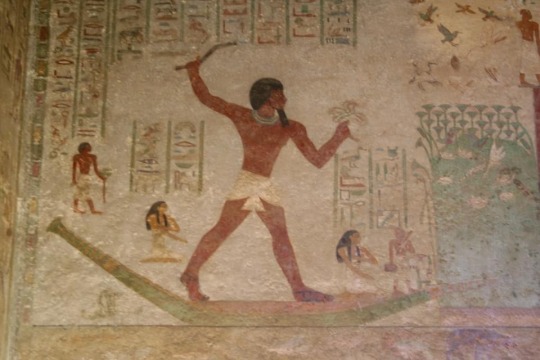

THE GREAT WA-SETIANS & KINGS TOMBS OF WASET (Theban Tombs)
The Wasetians, Known to the Greeks, and modern Egyptians as Thebans (not to be confused with Greek Thebans) originated in the southernmost regions of Kemet, known as Ta-Shemau "the Land of Reeds”. Waset was the main city of the fourth Upper Kemetic nome and was the capital of Kemet for long periods during the Middle Kingdom and New Kingdom eras.
In antiquity Waset was known as a prominent city and royal house whose residents were dedicated to the worship of Amun. He was chief of the Wa-Setian Triad of deities whose other members were Mut and Khonsu. Amun’s primordial birthplace is located in Nubia at the holy mountain of Gebel Barkal. Waset served as a testimony not only to Kemetic life but also to the pinnacle of Hapi (Nile) Valley civilization. The Greeks would refer to the city as Diospolis Magna ('The Great City of the Gods'). The Greek Poet Homer once wrote about the majesty of Waset, labeling it a place where “heaps of precious ingots gleam.”
Over the centuries the Wa-Setian Kings from the south battled for control over Lower Kemet with invading forces from the near east. The reunification of the nation under Mentuhotep II ushered in a new sense of security throughout the country and established Kemet’s Middle Kingdom, an era that was to become a golden age for artistic and literary creation and a truly revolutionary period in regard to religion and royal ideology.
But during the reign of Amenemhat IV, a local ruler in Lower Kemet of foreign origin became more and more powerful. It is during this reign that the frequent expeditions into the Sinai came to a stop, probably because the expeditions had to go via the Delta. Towards the end of the reign of Nefrusobek, this foreign ruler was able to found his own dynasty, the 14th, which, ruling from the city of Avaris, controlled the eastern Delta, and perhaps all of Lower Kemet.
For a time Waset was a wealthy city under the rule of the Kemetic Empire but was later sacked by Assyrians, Persians, Romans, and later by the Arabs. Their destruction is illustrated in the Wa-Setian (Theban) Tombs list, as most of the statues and steles of these Southern Kings and Queens have been erased from history. It’s hard to believe that anything could survive several generations of destruction, but Waset has. The Wasetian Tombs known today as the Theban tombs were for the most part destroyed and over the years have been overshadowed by the Valley of the Kings. Remanence of the temples and tombs still remain as well as the Temple of Amun at Waset (Karnak), the tomb of Tutankhamen in the Valley of the Kings, and mortuary temples of Ramses II and Queen Hatshepsut.
"King of Upper Kemet…Beautiful is the Ka-Soul of Ra who appears in Waset"
"I have not spoken angrily or arrogantly. I have not cursed anyone in thought, word or deeds." ~35th & 36th Principals of Ma'at
26 notes
·
View notes
Text

painted pottery from Karanog, lower Nubia, Meroitic period
ca. 100BC-300CE
4 notes
·
View notes
Note
so how did you feel about trial of the amazons 👀? -joeysmuttonchops
Omg hiii!!!
I actually liked it!! Not as much as WG 2021, but it was a fun, solid introduction to Amazon characters for me, esp with the inter-group beef and what distinguishes the Bana-Migdhall from the others. There were so many fun interactions and it made me realize I honestly misconceived the Amazon characters as being very strict and boring before I started reading their comics.
The plot itself and the *lowers voice* murder??? Actually took me off guard 😭 I saw Hippolyta and Phillipus kissing and I was like “Awww lesbians” and then THAT happened and it was like oh nevermind we can’t have peace around here
Cassie playing detective was cute though, but Artemis baby what are you DOING????
I also enjoyed the parallels between Nubia stepping up as Queen and leader versus Diana acting more impulsive out of understandable grief, but towards the end Diana using the lessons she learned in man’s world made me EMOTIONAL omg! She had a really interesting role amongst the Amazons that I appreciated. And it was so fun seeing Diana be upset, unraveled and making questionable choices as opposed to the voice of reason role she carries in the JLA and JLD.
YARAAAAAA <333 Ong I posted before that Yara made me SO SAD while reading because I also miss my mom and find it so difficult to be around “family” without her. The Esquecida definitely love her!!! But her loneliness was so understandable and heartfelt for me. And omg the end with her and Diana 😭 She’s right!! Why are we calling a woman in her twenties Wonder Girl lmfaooooo (THO I LOVE THE FORESHADOWING FOR FUTURE STATE OMG I CANT WAIT TO READ THAT)
Watching Diana, Philipus, Donna, and Yara work together during the trial was another fave moment for me, esp when they were bickering while running for their lives 😭
So yeah it was enjoyable!! But that might change with the more Wonder stories I read haha. Up next I think i’m gonna go through Nubia’s books and Future State: Wonder Woman. I’ve also seen WW Vol 2 Year One recommended but for some reason I can’t find it online!!! :( I’ll keep looking.
Oh and yeah there was a lack of Donna tbh, like she had screen time (page time lol), but I didn’t feel much connection to her in this story like I usually do (i don’t talk about her often but I do like donna!!) and Artemis was also a bit underdeveloped so I gotta find out what’s going on there too
#asks#wonderfam#thanks for asking <3333#curious on your thoughts!!#and omg i just read over this again and i feel like i should clarify 😭#my mom is still here i just live far away from her 😭#that’s why yara’s words made me so sad
8 notes
·
View notes
Text



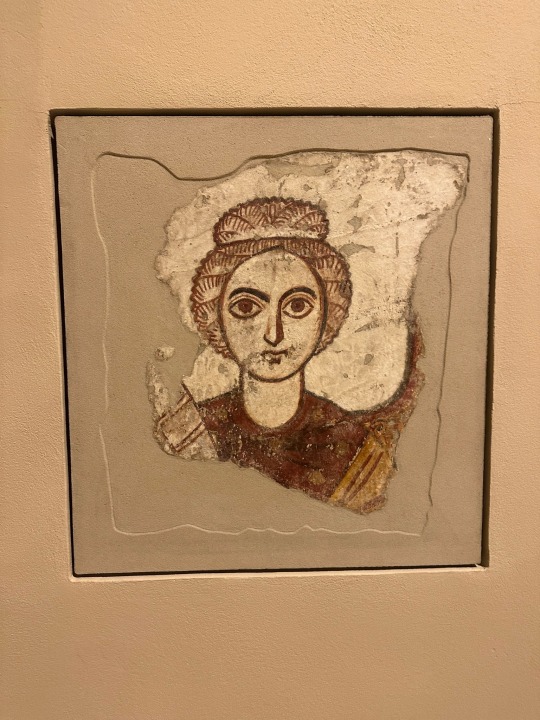
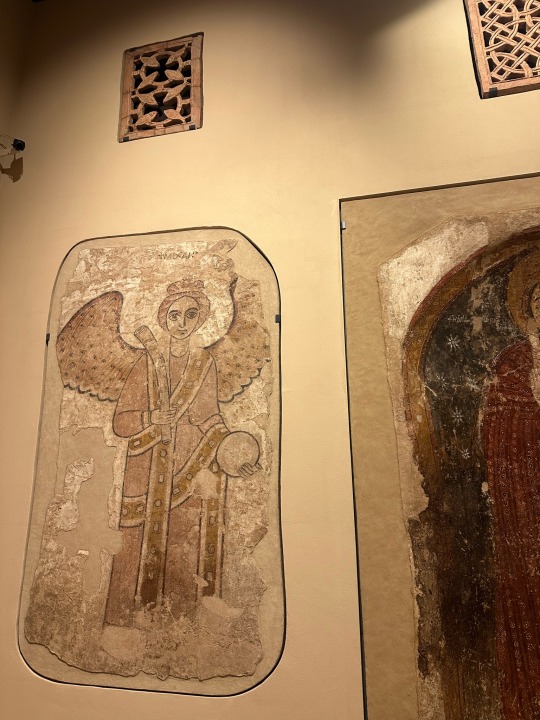

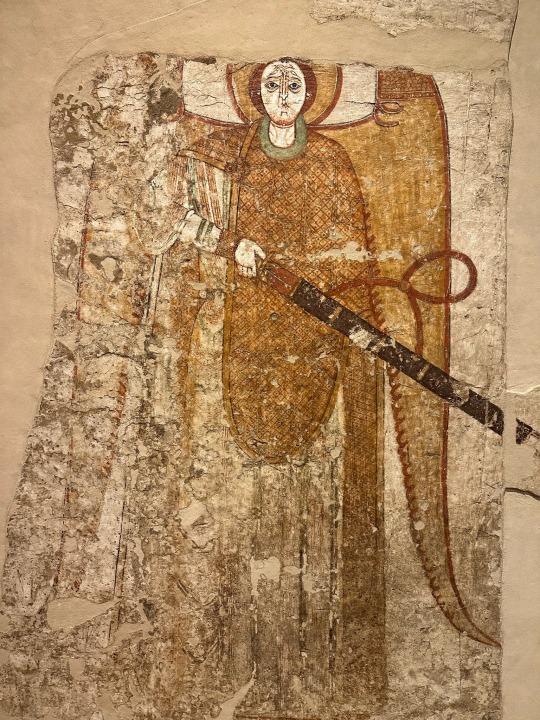

One of my favourite places - the Faras Gallery.
„Faras (formerly Ancient Greek: Παχώρας, Pakhôras; Latin: Pachoras; Old Nubian: Ⲡⲁⲭⲱⲣⲁⲥ, Pakhoras) was a major city in Lower Nubia. The site of the city, on the border between modern Egypt and Sudan at Wadi Halfa Salient, was flooded by Lake Nasser in the 1960s and is now permanently underwater. Before this flooding, extensive archaeological work was conducted by a Polish archaeological team led by professor Kazimierz Michałowski.”
„The cathedral was founded by bishop Aetios in 620 and then twice rebuilt: by Paulos at the beginning of the 8th century and Petros I at the end of the 10th century. The subsequent buildings were called after these bishops. The cathedral had been completely filled with sand thanks to which its structure and decoration were well preserved. These paintings are the best surviving examples of Christian Nubian art and depict portraits of archangels, mainly Michael, various monarchs and bishops of Faras, Christian saints, Virgin Mary and a number of Biblical scenes. They were executed in tempera on dry plaster, on several layers dated from the 8th to the 14th century. Of the 169 uncovered paintings, 120 were taken down from the walls. Sixty-six of them were transported to Poland and are today on display in the Polish National Museum in Warsaw, and in Sudan National Museum in Khartoum. In addition, a major pottery workshop was found.
Thanks to the discovery of the List of Bishops of Faras, it was possible to date each episcopate and thus to establish the date of some of the wall paintings.
In the turbulent later years of Christian Nubia, Faras seems to have declined and the administrative centre moved to the more easily defended area of Qasr Ibrim.”
(From wikipedia: https://en.wikipedia.org/wiki/Faras)
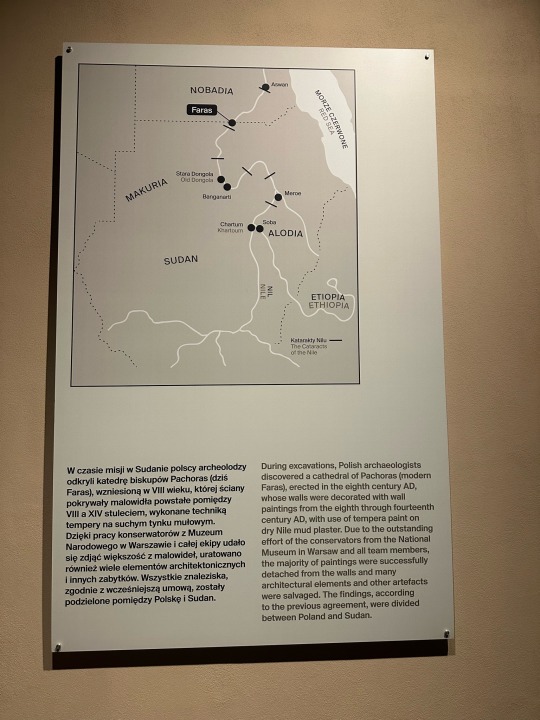

14 notes
·
View notes
Text
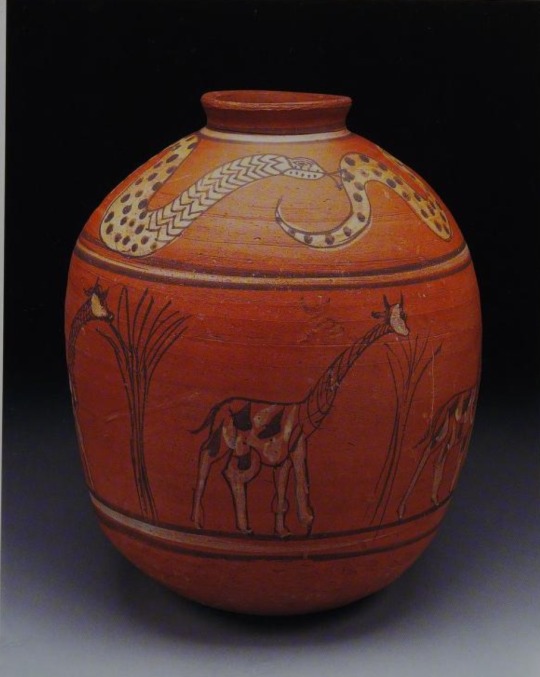
“Jar with figural decoration
From Karanog, grave 566
Meroitic Period (C. 100 B.C.E.-300 C.E.)
Ceramic and paint, h. 34 cm (13 3/8 in.)
Coxe Expedition, 1908 E818
From a grave in the large Meroitic cemetery at Karanog, this vividly painted jar was part of a set of funerary goods belonging to one of the elite members of Meroitic society. A frieze of foraging giraffes is painted in the midsection and one of undulating snakes around the upper body. Pottery was mass-produced in Nubia by Meroitic times, but its often vibrant and original decoration shows that ceramics were an important avenue of artistic expres-sion. Meroitic pottery contrasts markedly with the drab, utilitarian pottery used in Egypt during the same period.
The Meroites decorated their pottery with an inventive blend of uniquely Nubian, Egyptian, and Greco-Roman themes. This example is one of a number of jars from the Karanog cemetery with a giraffe motif. During Meroitic times, giraffes were not found in the arid environs of Lower Nubia but much farther south, in the savanna lands of southernmost Nubia. The clumsy appearance of the animals on the Meroitic jars suggests that the artists had never seen a living giraffe.
- JWW”
14 notes
·
View notes
Text

Baboon Cup
100 BCE-300 CE (Meroitic Period)
Egypt, Lower Nubia, Karanog
Ceramic, Paint
“In ancient Egypt, baboons were associated with the god Thoth. They also had a connection to the rising sun. The baboon depicted on this cup holds a triangular object that resembles the ancient Egyptian word for ‘gift.’”
On display at Penn Museum E8463
#animals in art#museum visit#ancient art#Egyptian art#Penn Museum#ceramics#pottery#cup#baboon#Meroitic art#primates#Thoth
13 notes
·
View notes
Photo

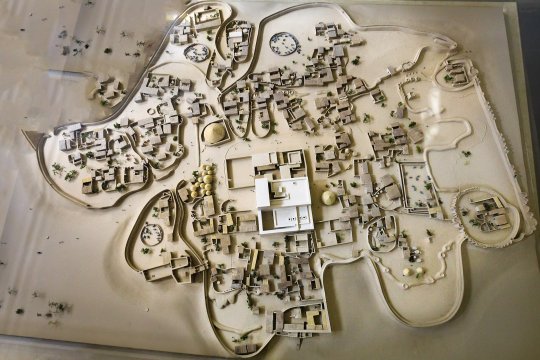
When is the first evidence of an African empire? I will have to go with Kerma, below I’ll explain why .
The general political situation in the Neolithic Southern Nile Valley (left), pre-Kerma around c. 4th millennium BC (centre), and a Medjay warrior depicted on a bucranium (cattle skull) from Mostagedda, Middle Egypt, (right), illustrating the use of Hieroglyphs among the southern populations living among the Egyptians
See where Kerma is in the purple ? it would take all those other polities creating a large Empire to be known as Kush.
So if by Empire we are talking about a state gobbling up multiple states, many may think Egypt because the land area was large, but Kerma at it’s height took over all the surrounding polities under a unified front, I guess one could argue the same for the early unification of the upper and Lower Egypt, but these were multiple entities from as far away as Punt even.


The standing remains of a c. 4000 year old monument. The Western Deffufa, a massive mud brick temple in the center of Kerma, capital of the first Kingdom of Kush.
The rise of Kerma (c. 2500 BC) sees the absorption of these tribes into a strong centralised state, know as Kush, which ended up rivalling Egypt itself. This period sees some of the first monumental construction activities in Sudan, organised labour, advanced metallurgy, cross-continental trade networks and the earliest use of Egyptian hieroglyphs as well as being embroiled in violent conflict with their northern neighbour, annexing lower Nubia and raiding as far north as Thebes. A thousand years after its establishment, the Kingdom of Kerma was conquered by the New Kingdom. 500 Years of occupation blurred the lines between Kush and Egypt, as the material culture of the two countries became nearly indistinguishable.

Aerial view of a historic reconstruction of the central district of the Royal City of Kerma, somewhere around c. 2050 - 1750 BC, showing the Western Deffufa, a massive mud-brick religious monument, still standing today at 18 meters in height , surrounded by elite residential area's. This central area was walled with massive earthen ramparts with bastions. A large necropolis, shrines, palaces and agricultural villages extending north and south towards the fertile plain of the Nile surrounded this district.
The rise of Kerma (c. 2500 BC) sees the absorption of these tribes into a strong centralised state, know as Kush, which ended up rivalling Egypt itself. This period sees some of the first monumental construction activities in Sudan, organised labour, advanced metallurgy, cross-continental trade networks and the earliest use of Egyptian hieroglyphs as well as being embroiled in violent conflict with their northern neighbour, annexing lower Nubia and raiding as far north as Thebes. A thousand years after its establishment, the Kingdom of Kerma was conquered by the New Kingdom. 500 Years of occupation blurred the lines between Kush and Egypt, as the material culture of the two countries became nearly indistinguishable.

The following is important as to why I think Kerma was the first Empire.
The El Kab inscription
The tomb belonged to Sobeknakht, a Governor of El Kab, an important provincial capital during the latter part of the 17th Dynasty (about 1575-1550BC).
The inscription describes a ferocious invasion of Egypt by armies from Kush and its allies from the south, including the land of Punt, on the southern coast of the Red Sea. It says that vast territories were affected and describes Sobeknakht’s heroic role in organising a counter-attack.
The text takes the form of an address to the living by Sobeknakht: “Listen you, who are alive upon earth . . . Kush came . . . aroused along his length, he having stirred up the tribes of Wawat . . . the land of Punt and the Medjaw. . .” It describes the decisive role played by “the might of the great one, Nekhbet”, the vulture-goddess of El Kab, as “strong of heart against the Nubians, who were burnt through fire”, while the “chief of the nomads fell through the blast of her flame”.
The discovery explains why Egyptian treasures, including statues, stelae and an elegant alabaster vessel found in the royal tomb at Kerma, were buried in Kushite tombs: they were war trophies
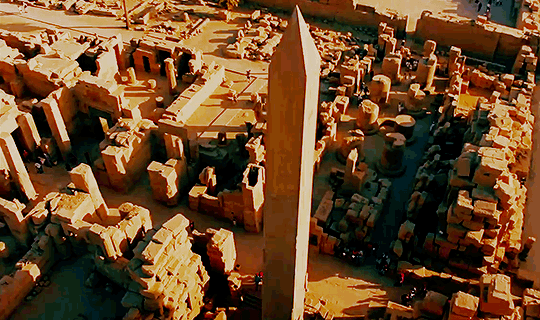
#ta seti#nubi#kemetic dreams#north africans#north africa#northeast africa#punt#kerma#egypt#ta meri#kemet
42 notes
·
View notes
Text
Site: Traveling down to Nubia
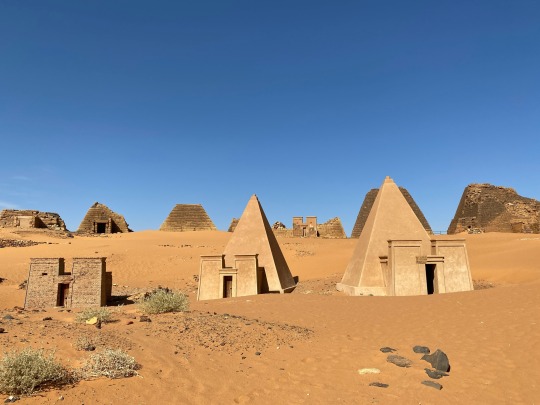
On my final stop in my Ancient Egyptian travel, I decided to visit Nubia or the Kingdom of Kush. This is stop is one that I could not wait to visit. As Nubia has many ancient cities like Meröe that host the Pyramids of Meröe. These pyramids are out number the ancient Egyptian ones. Although they are smaller in size than the ones in Giza. Because Egypt and Nubia have ruled over each other for thousands of years, so it would make sense that they have pyramids also! The King of Kush Aspalta has said “Our lord is here with us, but we do not know him! Would that we might know him, that we might enter in under him and work for him, as It-Tjwy work for Horus, the so of Isis……Let us give praise to his two crowns (Aspalta, 600BCE). In Aspalta phrase we can see that both the Egyptians and the Nubians both worship Egyptian gods and goddesses, his phrase included Horus and Isis. This can be accounted for with the Nubians were evidently well known by repute in the Southern Egyptian city of Aswan, and their geographical distribution may account for this; across the Northern Bayuda Desert and to the vital routes linking Moröe with the Northern Nile and Egypt (Kirwan, 46). The Greek geographer believed that the city of Moröe is inhabited by Ethiopians as this comes from his quote “I went as far as Elephantine [Aswan] to see what I could with my own eyes, but for the country still further south I had to be content with what I was told in answer to my questions. South of Elephantine the country is I habituated by Ethiopians (Herodotus, 430BCE). The Greek believes that Nubia is made up of Ethiopians which could not be the case as the Nubians are the ones who consist of Nubia. This is because Nubians next appear under the name ‘Nobades’ a Greek form of Noba, in the well-known Greek wording of ‘Silko, king of the Nobades and of the Ethiopians’ in the lower Nubian temple of kalabasha, now rebuilt on the outskirts of Aswan (Kiirwan, 47).
2 notes
·
View notes